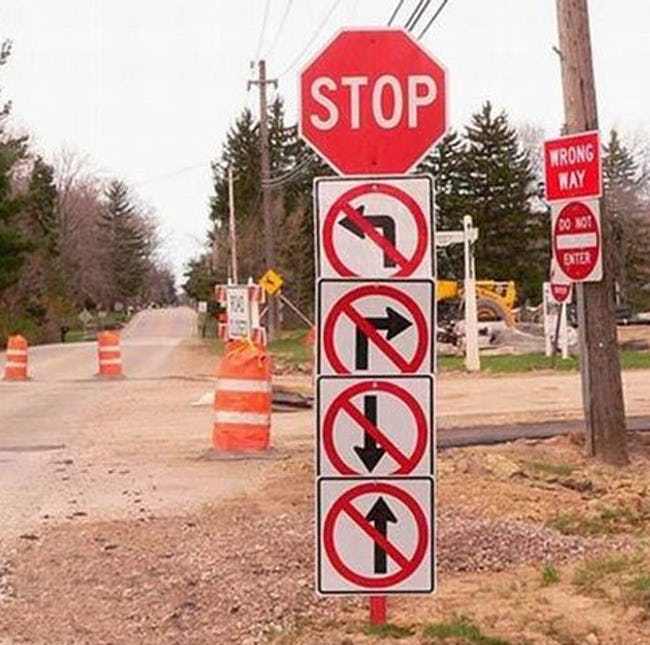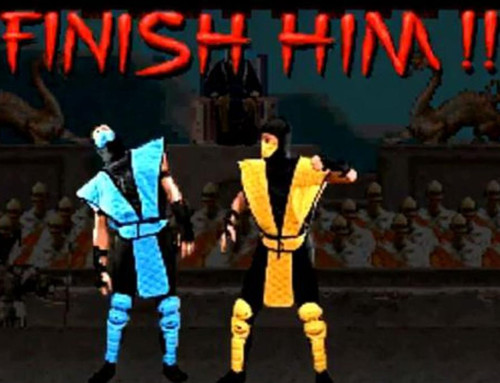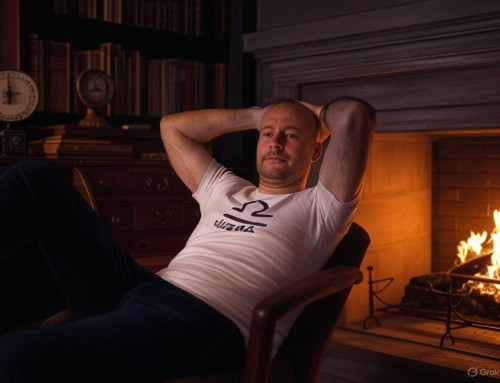When I first started my after school martial arts program, there was a lot of elements I had to get figured out. I knew how to teach martial arts, but timing out snack time, study time, play time, among other things, was trial and error early on.
Play time was a big question mark for me as I didn’t know how to approach it. With Snacks, homework, and classes, there was very obvious order and set goals to accomplish each day. Play time on the other hand…not so much. I don’t have any children myself, nor younger siblings or close cousins younger than me. My only real contact with youth was teaching, which again, has order to it.
So for the first day of play time for the kids, I simply said they could make use of whatever was on the main floor and padded (which was most everything). I gave the kids 30 minutes to do whatever they wanted, within reason, as I watched like a hawk wondering what they were going to do. There were no set rules, only basic guidelines of “be safe and have fun”.
For about a month, it went quite well. Exceedingly well, actually. I eventually started reading a book while sitting near the floor, only occasionally looking up. No issues. No injuries. No fighting. Just kids having fun. Then one day one of the students yelled out, “ouch!” I looked up and saw him holding his eye and mildly upset. He and the other students were playing around with the padded weapons and he accidentally got hit in the eye. Nothing major, but I didn’t like it and didn’t want it to happen again. So I made the first rule of play time, “No Hits to the face”. If someone hit the face, they sat out of play time the rest of the day as punishment. Within minutes I hear another child scream out, “Timmy! Stop that! The rule is no hitting to the face! I hate you!” This was, of course, followed by the child running to me (clearly not injured in any way) telling on Timmy and that he had hit her in the face. Timmy, of course, quickly refuted this incident by stating that he hit her on the side of the head, not the face. So, I adjusted my first rule to include no hitting to the entire head, not just the face. Problem solved, right? The next day, I hear two students arguing yet again. “Stop hitting me in the head, Timmy!” “I didn’t hit you in the head, I hit your neck!” quipped Timmy. And so my rule morphed yet again to, “anything above the shoulders”. Moments later this was proceeded by a biology lesson of what the collar bone is and whether or not it is considered part of the neck or not…
For about 2 years I kept this rule of “no hitting above the shoulders” or you’ll sit out of play time along with introducing numerous other rules and punishments for breaking such rules. A LOT of students missed a LOT of play time to say the least. This was frustrating as I spent all of my time watching like a hawk again and replaying security cameras to determine if a child’s claim of being hit in the head was real or they were trying to get the other child in trouble. It was 50/50. I finally got tired of this and changed the rule yet again. This time I told the students to please not hit the head as you risk hitting an eye (but mentioned no punishment if it happened), and simply stated, “Do whatever you want within reason during play time but be safe and if I or another staff member has to get involved, play time is over for the day.
When asked what would happen if someone got hit in the head, I simply stated, “it could lead to an injury, so don’t do it”. I don’t recall the last time I had someone complain or get injured from being hit in the head as its quite rare that an injury occurs from it. Plus, students go out of their way to talk things out and apologize if someone does something wrong or makes a mistake as they all know if they come crying to me or a staff member, it all gets shut down no matter who’s to blame.
So what have we learned from this? Timmy is an asshole. …wait, no, well, yeah, but that’s not the point. The point is, issues really never came up until I introduced rules. Before I set any rules to play time, it was bliss. There was only one accidental injury (in which the kid took 30 seconds to recover from and was right back in) and little to no arguing. As soon as the rules were implemented, there was suddenly students getting in trouble for breaking the rule (which were almost always accidents) and kids manipulating the rules to get others in trouble.
Despite all of the rules set, the amount of injuries didn’t go down. The complaints of injuries actually went up. Nearly every day there was a kid crying to me only to wipe away the tears and be fine seconds later. Seemingly more upset that they perceived someone was breaking the rules than anything. So what did all of these rules accomplish? More arguments, more students punished, more frustration, the same amount of mild injuries, and extra headaches for me with less time to read my damn books!
Why do we have hard line rules again? I’m going to sound like an Anarchist here, but rules are one of mankind’s worst invention of all time. Think about it. There is ALWAYS an exception to the rule, no matter what the rule. And to define the rule specifically takes a ridiculous amount of time in order to attempt (and usually fail) to make sure the rules aren’t manipulated and are as fair as possible. Look no further than our tax system…rules and loop holes everywhere. Suggesting that we all are the same and should do the same thing, no matter who we are or what our situation. We are not the same and situations change everything!
Hard line rules and laws remove free thinking, reasoning, logical thought and create anger or a feeling of unfairness if we think someone is breaking the rules while we follow them. When rules are set, people mindlessly follow them without thought with the assumption they are doing what’s right. This is horrifying. Without these rules, we are forced to think for ourselves and decide what’s best for the situation following only general guidelines, such as “Don’t intentionally harm others” or “Don’t be a douche”. Or, what I tell my students on a regular basis, reciting the Golden Rule of, “Do unto others as you would have done unto you”.
Another example of this comes from a personal experience with my part time work at a local gym. I worked at this gym for over a decade as a trainer. My job consisted of: being a good trainer. That was about it. I wasn’t expected to be a great salesman, cleaner, booth operator, or do telemarketing (we had others skilled at each of those to do those all). The gym was sold about 10 years into my time there to another company. This new company implemented a hard line policy in which the trainers were also the sales team, customer service reps, booth operators, made birthday phone calls, forced to participate in numerous meetings involving sales tactics (and nothing geared towards being a better trainer), among many other jobs that had nothing to do with being a great trainer…and actually took time and effort away from being a better trainer. I was told at one point to not take, “No” for answer and that you can squeeze out something from everyone. I had to put my foot down on this one. If you’ve read my article, “Me Too Brutee” then you understand my moral responsibility to accept the word, “no”. However, I was told that all trainers need to do this and if I couldn’t do it, then I shouldn’t be an employee there anymore. I still refused to follow these policies, so I was let go. The gym lost their most experienced and most educated trainer (by far), my clients lost their trainer. For most of my clients, I had trained them for numerous years. This hard line policy hurt the training department, the clients, they gym, and myself. All for what? A hard line policy…a rule. A rule that was written up by someone who was not involved in the situation. This wasn’t the decision of anyone at the gym, and everyone directly involved hated it. But it was a rule. And since rules have no wiggle room, everyone involved was hurt. Change this rule to a guideline or a suggestion, and things suddenly change. Understand why the policy was written rather than blindly following it, and suddenly there’s a different outcome. These policies in some cases are great for the company, trainer, and client. In other situations, they are horrendous. I could go on and on with further examples and explanations, but I want to get to how this relates to martial arts and self- defense.
How do I defend against a punch? Which way do I step when being grabbed here? What do I do in this situation? Common self-defense questions I get in nearly every self-defense seminar or class. I welcome these questions, however, there is no direct answer that covers all. There is no “rule” to follow that applies to all variations of that situation. When asked, “How do you defend against a punch?” it may seem like one or two answers will suffice, but there are numerous situations that must be recognized. Is the punch a jab? A cross? A lunge? A straight punch, uppercut or hook? Does the attacker have a weapon in the other hand or positioned somewhere noticeable? Do you have a weapon? Are there multiple attackers or just one? Every single one of these variables could potentially change the defense used. So one set rule cannot be applied. When it comes to self-defense, there are no rules. I make this very clear when teaching class as I no longer teach sport martial arts. Sports have rules, self-defense, nada.
Students should learn ideas, understand their strengths and weaknesses, not specific defenses to remember for every single possibility, we as instructors, can think of. The situation changes constantly and so must the defenses. Students constantly place themselves and their techniques into boxes filled with rules. For instance, when a Hapkido student is trying to learn a joint lock, a common issue that arises is that they can’t get it to work properly or well enough to work on certain students. The student may ask, “if he resists, I can’t seem to get to the joint lock from this grab, what am I doing wrong?” I’ll ask them to show me what they are doing and trying, and it almost always involves grabbing, torquing and over exertion of strength. Most seem to forget that there is no rule that says you can’t just jab your thumb into someone’s eye or slap them in the junk to overcome strength issues. Eventually, the students hear me recite the same couple responses to their answers, “it’s all situational” and “if you’re struggling to overcome their resistance…just f’ing hit them, they’ll loosen up”.
Being that Hapkido is considered a “grappling” art, the thought of punching or kicking quickly gets forgotten and placed into a rule of, “you can’t hit”. That’s a bad rule! A timely placed solid punch, poke or kick to a vital area can quickly overcome strength and resistance issues when you haven’t perfected the joint lock yet! It’s not easy to remove these boundaries and rules we have built up when it comes to martial arts. It doesn’t help that many instructors demand these rules be followed. It’s understandable, however, I just don’t follow it. There is a reason for these rules though. Many martial arts styles follow set philosophy or patterns or ideas to mold their martial arts style. This can make it easier to learn since all you have to do is search within the imaginary box that was created to discover the defense needed. For instance, traditional Hapkido follows three major philosophies for its techniques, “circular motion”, “flow like water”, and “non-resistance”. These are great guidelines to use, but in my opinion, they are just that, guidelines, not rules. I teach many techniques in Hapkido that don’t follow those guidelines. I do so because my largest focus is teaching self-defense, not teaching a style. I’ll throw away tradition and style at the drop of a hat if it means introducing a technique in its place that works better and more efficiently. Point being, you can still have these guidelines to follow, without the hard line rules that most want to attach to it. After teaching students a new technique, I usually tell them to, “play” with the technique. Discover what works and what doesn’t. Follow the general guidelines, but fill in the gaps with what works best for you and you’re body type and your opponent’s body type. I then watch carefully and make little adjustments to refine their technique. This also allows the student to discover why certain movements don’t work. It’s easy for me to tell them not to turn left and only turn right, but until they try it, they’ll never fully understand why. So I want them to fail on occasion to help them better understand the proper way to do things….which again, may change depending on circumstances. This is also where sparring helps considerably. This promotes creativity and thought during class rather than mentally shutting down and blindly doing what I tell them to. That’s fine if every circumstance is perfect and they never make mistakes…but that has never happened in the history of self-defense. In realistic situations, self-defense is ugly. About 10 years ago I made a dramatic change to my Hapkido program to reflect these ideas and lack of hard line rules.
Hapkido is well known for having approximately 6000 techniques to learn. Covering defenses from every situation possible. From wrist grabs, to shoulder grabs, to hair grabs, to armpit grabs, to bear hugs, to ground positions to weapons. The list is insanely long and no possible way to memorize it all AND perfect it all. I consistently saw students focused just as much on armpit grab defenses that was a little “iffy” as they were on a bear hug defense (which is much more likely) that was very direct and useful. I hated that. Who gets grabbed in the armpit?!? It’s possible, though, so we covered it. I didn’t like the results I was getting with students due to this process. I hesitated on changing anything as it would go against tradition and against what I thought were the “rules” of the style. I also worried that my instructor (and others above me in the federation) would shoot it down. However, one major reason our federation was developed is to allow schools and their owners to do what they saw fit for their students and not have to be forced to do what everyone else is doing.
So with that in mind and encouragement from students who liked my ideas, I dramatically altered the Hapkido program I was teaching. With this new program, I didn’t feel comfortable simply calling it, “Hapkido” anymore, so the name, “Moo Hahn Hahn Hapkido” was born. Translated from Korean, this means, “Unbound Hapkido” or “Boundless Hapkido”. A great reflection of my willingness to let go of the conventional rules and boundaries we place on our martial arts styles and life. I try and relate this unbound philosophy to my students. It’s not easy, and I know there is frustration early on when I have the same responses to students, “what if?” questions with, “it depends”, but eventually, they start to learn to remove their restrictions in their training and expand their minds and creativity! My Hapkido program now has about 20 joint locks, 10 throws, and about 30 ground defenses as our core color belt system that students focus on rather than the 6000 random techniques that were traditionally taught. The funny thing is, we still learn all of those 6000 techniques, just not the same way or with the same emphasis. So we get to the same end point, but we get there more efficiently and effectively with the most crucial defenses.
Take this removal of, “rules” into consideration. The next time you are stopped at a stop sign when there is obviously no other traffic around and ask yourself, did I need this rule of stopping at a stop sign? Would I be less safe if it wasn’t here? Would I really just blast through intersections without stopping or even looking for oncoming traffic? What will really upset you is the realization that if we suddenly took that sign down…we would blast through it, even with oncoming traffic. This invention of a stop sign removed our thought process and we now assume that if there is not stop sign, then we have the right away. Whereas, if there was no stop sign to begin with, we would be cautious at every intersection, because we would be more mindful of what’s going on around us. Let that sink in…







Leave A Comment